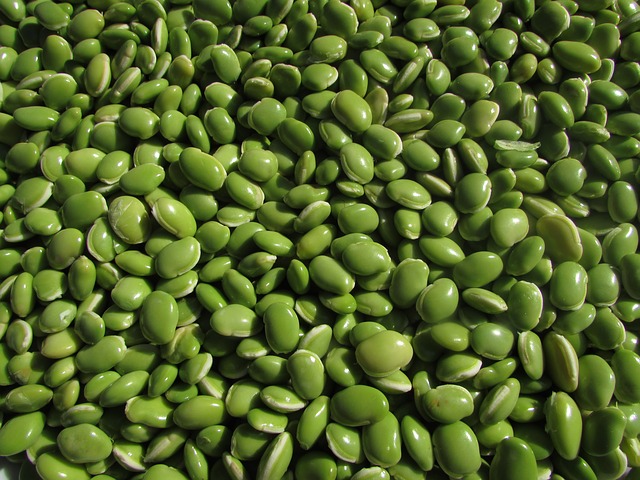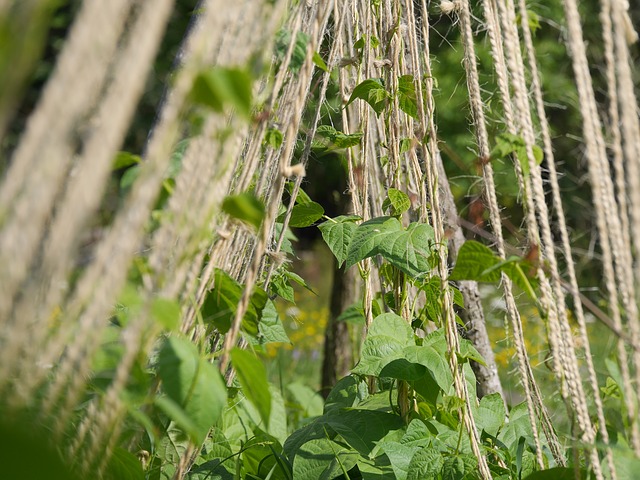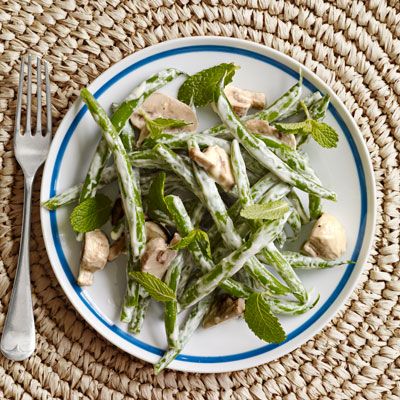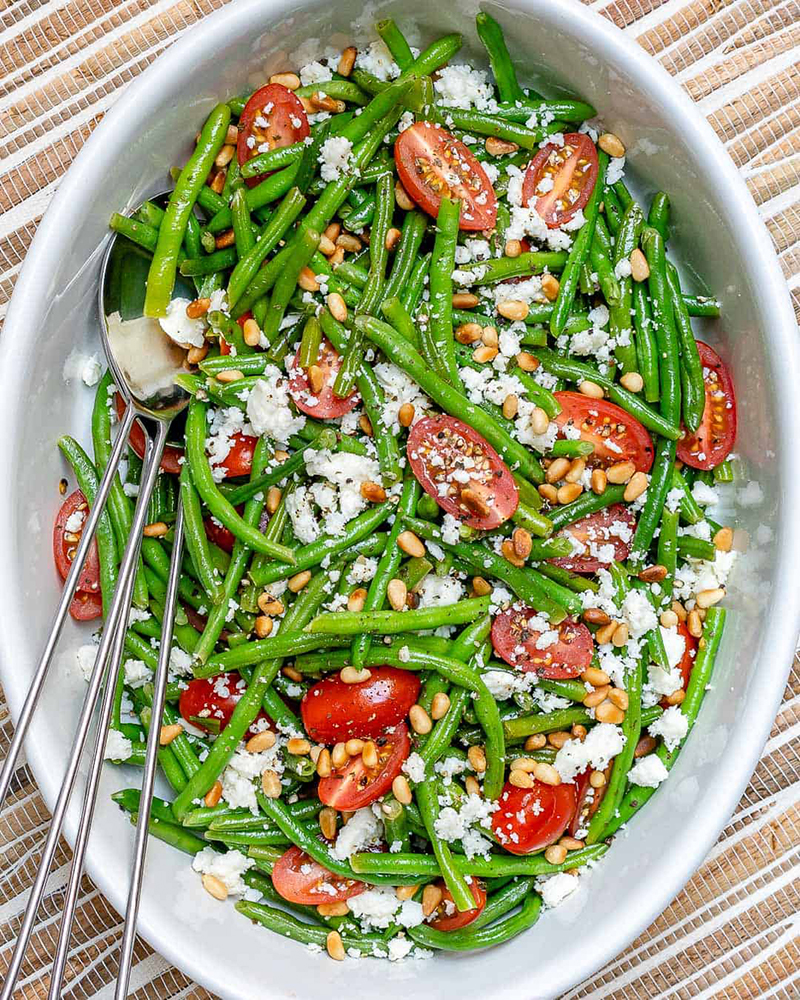The string bean is an unripe, edible, common bean. The modern word bean comes from the Greek phasolion (bean).
The leguminous bean, a high-protein legume, is valued for its nutritional and gustatory qualities and is a dietary staple. With its diversity and use in culinary recipes in the modern world, it is difficult to imagine that originally European countries perceived this crop as an ornamental one. Asparagus beans were grown to decorate gardens and greenhouses.
Asparagus beans are called “asparagus beans” because their pods look and taste very similar to real asparagus, but are nutritionally even more useful than real asparagus beans.
History of Appearance and Proliferation
String beans, also called asparagus beans and green string beans, together with the other common bean varieties, belong to the common bean species.
The asparagus bean was first cultivated about 7000 years ago in Central and South America. It is mentioned in Chinese treatises of the second millennium B.C. It is not possible to determine the exact homeland of this crop. Historians are inclined towards the Americas, ancient Egypt and China.
Food bean seeds have been found as far back as Mexico. In burials from the 12th and 15th centuries in areas inhabited by Aztec and Mayan tribes.
The Spaniards were the first to get to know beans, followed by the Germans and the French.
In Europe, the bean started to be eaten in the 18th century. The crop has been known since the 17th century as “chickpeas” and in France it was called the French bean.
The main suppliers of beans on the world market today are India, China, Indonesia and Turkey.
There are dozens of varieties of string beans – curly, semi-curly and bushy.
Useful Properties
Beans are a low calorie product with a low glycaemic index. It can be eaten safely by people with diabetes and overweight.
Unlike other vegetables it does not absorb harmful substances from the environment. Compared to peeled beans, they are not too rich in protein, but they contain many more vitamins – vitamin C, provitamin A, B vitamins, vitamin E, folic acid, minerals and fibre.
The balanced combination of fibre, folic acid, magnesium and potassium makes string beans a good heart attack preventive measure. It removes excess salts from the body. The health benefits of green beans are incalculable.
It contains vitamin B9 (good for pregnant women), as well as vitamin B5, C (immune support) and the unique vitamin K – responsible for blood clotting and calcium absorption. Thanks to manganese, string beans slow down skin aging and help maintain its elasticity for years to come.
The advantage and disadvantage of string beans is that they are rich in fibre. On the one hand, they are good for the intestines, but on the other hand, excessive consumption leads to a bloated stomach.
Green beans contain important elements in the fruit such as folic acid, molybdenum and zinc. Green beans contain iron and sulphur, which help the body fight bacteria and viruses.
Calorie
The calorie count is 24 kcal.
Nutritional value : Protein – 2.0 g, Fat – 0.2 g, Carbohydrates – 3.6 g
What does it taste like?
The string beans have a mild, slightly sweet bean flavour with a grassy undertone.
How to Choose?
Pay attention when choosing green beans:
● Check that there are no spots on the pod;
● The colour of the pods should be uniform;
● The bean pods should have an even, light green colour and be flat;
● If the peas are very large, the beans are overgrown and have become coarse;
● there must be no rough fibres in the seams and no mechanical damage;
● Fresh beans are long, elastic but also quite flexible;
● When the pod is cracked, you should hear a loud “click”;
● When buying in a shop, check the integrity of the sealed packaging;
● Do not buy an overripe fruit with a hard skin.
When buying frozen:
● Pay attention to the expiry date;
● for the lack of ice in the bag, and that the beans are not lumpy – this indicates repeated defrosting.
Types and Varieties
The string bean is a shrub that is between 40 and 250 cm tall.
There are up to 50 different species.
The plant produces a variety of colours for the seeds inside the pod. Not only the seeds but also the unripe bean pods are edible because, unlike common beans, the pods do not have a parchment layer and rigid fibres.
When growing string beans, the bean is not allowed to fully mature in order to preserve the delicacy and juiciness of the pod. Nowadays, there are special varieties of asparagus beans that do not develop for a long time or have no parchment layer and fibres at all, the bean is round, with small to medium-sized seeds that taste like asparagus.
The pod flowers are mostly white or greenish and small. The ornamental varieties have been bred in various shades of red, purple, lilac and violet.
The shape, length and colour of the pods and beans also vary greatly. They can be almost flat, and rounded, straight or curved. The most common colours are green, yellow and purple. Less common are white, pink and mottled beans.
The main difference between the asparagus bean and the grain bean or peeled bean is that the pods can be eaten whole without removing the beans. If they become over-ripe whole, they are no longer suitable for eating.
Varieties
Asparagus beans are divided into two main groups by plant type:
1. Climbing. The flexible stems reach a length of up to 3 metres and need to be tied to poles. Climbing species can also perform an ornamental function.
2. A bush variety. Predominantly low-growing. There are early- and mid-ripening varieties (45-60 days from seedlings to harvest) and mid-ripening varieties (55-75 days).
The bush beans come in several colours: green, light yellow, dark purple and mottled. Varieties with green beans are the most popular as they have a familiar, classic appearance. Beans with yellow pods have a more appetising and unusual appearance. After cooking, the beans are slightly paler, but retain a slight yellowish tint. Dishes made with these beans look more exotic. The green and yellow asparagus beans do not differ significantly from each other in terms of taste. Different coloured asparagus beans make a very festive and unusual dish.
The purple-coloured asparagus bean pods lose their distinctive purple colour and change to a brownish-green colour when they are cooked. Mottled beans have very ornate pods with random splashes of purplish red on a pale yellow background. As it matures, the distance between the bright stripes and spots decreases and the pods become more red. Both the pods and the mature seeds are colourful.
Vegetable bean varieties can also be referred to as ‘sugared’ and ‘semi-sugared’:
● Sugar bean pods are characterised by the round cross-section of the beans in the section; these pods are very fleshy and have a lot of jelly inside.
● In semi-sugar varieties, the pod is oval or flat in cross-section, and there is considerably less pulp (jelly). These varieties are usually referred to as all-purpose varieties because they are suitable for both grain and unripe cooking.
The main types of string beans:
● Green asparagus beans have pods between 60 and 500 mm long. They are shaped like elongated cylinders or short sticks 7-13 cm high. Each one contains 3-8 beans. Green beans can have beans that are bright green, grey-green, green with purple lines or spots, and yellow.
The French species has dark green to light green pods up to 10 cm long.
Kenyan hybrids are distinguished by their small diameter (4-5 mm) and yellow-coloured seeds.
Chinese species reach 40-50 cm in length. Green beans. They are soft and tender pods. They can be eaten whole, with the skin on. It is a popular dish today. The pods are easy to prepare.
They boil quickly in salted water. Cut off the tough edges before boiling. Cooked pods can be frozen. They will retain all their healthy properties.
● Purple beans-Dragon’s tongues. These are yellow-purple pods 12 cm long. They are also called Georgian beans. After boiling, the pods turn green. They can also be eaten raw. If the fruit is overgrown, remove the kernels and cook them separately.
● Yellow wax beans. Good for soups, salads and stews. Suitable for eating raw. Can also be boiled, steamed, blanched or fried.
● Flat bean is a subspecies of the asparagus hybrid. All varieties are green or yellow in colour. There can be up to 10 beans inside the pod.
● The bushy types of vegetable belong to the small green bean group. Their fruits are rounded, pea-like, and coloured white. The pods vary in colour from green to almost white. They are up to 6 cm long and have 4 to 10 peas inside.
The yield of the plant is high.
The pod is subdivided according to shape and size:
● The common type (common in all European countries) – the pod is up to 20 cm long. It can contain up to 10 beans.
● The ancient varieties of Vigna are bred in Asia. They reach a length of 60 cm to 1 m. Inside there are 100 seeds.
● The climbing bean stalks grow to a length of 3 to 5 metres. They are used for garden decoration. It needs good support because of the heavy weight of the pods.
● Another species grows on shrubs 40-50 cm high. It is unpretentious with regard to climatic conditions, can grow in almost any kind of soil and it ripens quickly.
The first three types include the asparagus bean and flat bean pod hybrids. They produce small bean fruits with a greenish-white colour.
Application and Combination with Ingredients
Green beans are one of the frequently used beans in cooking.
The fleshy bush beans are great for canning.
Thin wicker – for soups and stews.
Green pods make a great side dish for meat and fish. They go well with eggs and potatoes, but also with many vegetables – bell peppers, broccoli, fresh tomatoes, onions, courgettes and aubergines. Use fresh green beans for a variety of soups and side dishes.
Frozen green beans can be used as a side dish, as an ingredient in soup, in a salad or as a snack in its own right. Frozen beans are most popular with omelettes and meat dishes, especially when mixed with other vegetables.
Classic vegetable combinations are green beans and: mushrooms; garlic; zucchini; sweet peppers; aubergine; maize; broccoli; onions; potatoes (especially young); tomato.
You can complement the string beans as a dressing with:
● soy sauce;
● cream (not very heavy);
● lemon juice;
● dried herbs (Provencal herbs complement the taste of the vegetable very well).
Unlike mature beans, which do not pair well with porridges, string beans are more functional in this respect, and can be served with rice, buckwheat, quinoa and sometimes bulgur.
Cooking Methods
Raw beans should not be eaten as they may be poisoned due to the harmful substance fasin. It is quickly destroyed by frying, stewing, boiling, etc.
To cook the beans, they must be boiled.
It is surprisingly flexible in the culinary sense. It can be boiled, steamed, microwaved, roasted, baked, stewed, pickled and even sugared.
Cooking the green beans
● Rinse the beans under running water to get rid of dirt and sand;
● Cut off the tails on the pods and put them into the boiling water;
● Boil fresh green beans for no more than 4-5 minutes and frozen beans for 5-7 minutes, otherwise they will boil over, lose all their nutrients and become unsightly in colour.
Cook the frozen beans until they come to the boil in salted water. They should remain firm but not crunchy. As soon as the beans have boiled, place them under cold (ice-cold) water to preserve their colour.
Steaming
● Boil water in a saucepan.
● Place a colander or a special steam cooker on top. It must not touch the liquid.
● Put the beans in it and cover with salt.
● Cook frozen food for 3-5 minutes and fresh food for 6-7 minutes.
Refried beans
● Dip the pods in salted, boiling water for 6 minutes;
● remove the vegetables in a colander and dry them;
● fry in olive oil;
● add well chopped garlic;
● fry for another 5 minutes;
● you can add spices to taste.
Stew beans
Braised string beans are the quickest and easiest dish you can make with these legumes. It literally takes 10-15 minutes. Serve this healthy side dish with meat, fish, cutlets, ham, sausages, etc. If desired, add various spices and spices during cooking: fresh or dried garlic, oregano, provenza herbs, ground paprika – to give a bright colour.
1. Wash and peel the beans.
2. Break the pod; if it breaks immediately, you can simply cut it into 3 cm long pieces. If not, and hard veins start to stretch out on the sides, you should remove them by simply pulling them all the way out or with a knife.
3. Cut off the tip and stalk and cut the pod into pieces.
4. Scald the tomatoes and peel them. Grate them on a grater.
5. Chop the onion into small cubes and sauté in oil until transparent.
6. Add the beans, top with the tomatoes, garlic, sugar and salt.
7. Cover and stew over a medium heat for 15 minutes without stirring.
8. After 15 minutes, open it and stir it in.
9. Add hot water and olive oil.
10. Cover again and simmer for another 15 minutes.
11. The beans are ready. They can be eaten warm or cold.
A simple side dish
Fresh or frozen green beans are suitable. The time required is 20 minutes.
● Soak the pods in water at room temperature for 10 minutes.
● Cut the beans into 2-3 pieces.
● Toss in a pan of boiling water and simmer for 4 minutes (simmer frozen for 2-3 minutes longer).
● Then strain the pods in a colander.
● Sprinkle finely chopped herbs, garlic or onion rings on top.
Storage
The shelf life of string beans is short.
It is advisable to prepare it immediately after picking it from the vegetable garden or buying it at the market.
At room temperature
At room temperature, green beans do not stay fresh for more than 12 hours. After that, they quickly lose their healthy properties and taste. They turn yellow and wilt.
In the refrigerator
If stored in the refrigerator, the green beans will stay fresh for 3-4 days. In an airtight container, they can retain their health and taste properties for up to 7 days.
If you have a small quantity of the product, it can also be stored in the refrigerator. Wrap in perforated polythene beforehand. The product should be used within 7 days if stored in this way.
Freezing
Freezing the beans is the ideal way to store them and you can use fresh or ready-to-eat pods. Before freezing, trim the pods on both sides and remove the fibres from the cores.
It is important to follow the rules during the harvesting process:
● Wash the pods and dry them well.
● Cut each pod into pieces no longer than 3 cm long.
● Blanch the product in boiling salted water for 5 minutes.
● Take the pods out of the pan and place on a paper towel, a clean cloth. After the product has dried completely, place it in plastic containers.
● When laying down, the amount of product must correspond to usage at one time.
● Repeated freezing of the green beans is not permitted.
Frozen green beans should be kept in the freezer for no more than 6 months:
● wash and dry the bean pods;
● cut into small pieces;
● place in hermetically sealed bags or containers.
There is no need to defrost for cooking, just take it out and put it into a pan with boiling water.
A small amount of asparagus beans can be frozen as a vegetable mix. To do this, cut the prepared vegetables into equal pieces, mix them up and put them into serving bags. Freeze.
Blanching
Sometimes young beans are blanched before being frozen. The colour, flavour and all the healthy properties are retained.
The blanching process:
You need a pot of boiling water, a colander and a deep bowl of cold water. If possible, put ice in the cold water.
● Place the washed and chopped pods in a colander and immerse it in boiling water for 3 minutes.
● Remove the colander and put it in a bowl with water and ice.
● Remove the pods after a minute and put them out to dry on a towel.
● Freeze as usual from now on.
Freezing boiled green beans
Overripe beans should be boiled before being frozen. These pods are coarser to the touch and contain larger fruits. Boiling them makes them softer, but some of their nutrients are destroyed.
● Place the prepared beans in salted boiling water,
● cook for 10 minutes,
● remove, allow any excess liquid to drain off,
● and freeze.
This method is also used if the beans are included in a mixture of different vegetables. The vegetables are boiled, sliced and frozen. These can then be used to make stews and soups.
Canning and pickling
Asparagus beans are great for canning.
A handy way to prepare string beans for storage is to pickle them:
● boil the cleaned and chopped shoulder blades for 3 minutes;
● cool quickly (so that the pods remain firm and do not melt);
● put in a jar and pour the marinade (1 tsp. vinegar, 2 tbsp. of sugar and 1 tbsp. of table salt per 1 litre of water).
Keep the stock in the refrigerator. The beans cooked in this way can be eaten on their own or as part of various salads. This way of preserving the beans retains their healthy properties. In addition, the beans can be combined with other vegetables to make salads and vegetable caviar for winter storage.
Recipes Ideas
1. Squid in tomato sauce with chilli

A quick and tasty dish. It tastes spicy, to make it less spicy, reduce the amount of chilli pepper, but don’t remove it completely. Serve with black bread and lemon slices, garnish with mint leaves and rub a little lemon peel on top. The string beans are the perfect accompaniment to the calamari and the tomato sauce soaks up all the ingredients perfectly, giving a succulent finish.
Tender string beans cooked with butter and shallots, sprinkled with crispy roasted almonds and parsley. A simple but elegant side dish that pairs perfectly with chicken, beef and pork. Fry the almonds whole or sliced in ghee. Instead of shallots, you can simply use minced garlic or chopped onions.
A delicious side dish that you’re sure to love. This is a delicious dish of oven-baked vegetables with garlic and aromatic seasonings. It’s a great option for dinner.
4. Roast pumpkin and green beans casserole
Roast the bright, sunny, nutmeg pumpkin, mix it with the green beans and sprinkle the sliced almonds on top before baking. Contrast the texture of the soft green beans and tender pumpkin with the crunchy almonds. A very pretty and appetising dish with a creamy flavour.
5. Fried cheesy green beans with garlic
Cheesy green beans are baked in the oven and seasoned with garlic. This side dish would make any dinner. This vegetable dish is easy to prepare and delicious.
6. Homemade green bean casserole with crispy fried shallots
This casserole includes fresh green beans, mushrooms and a homemade béchamel sauce. The decisive argument is the crispy fried shallots – they taste so much better than tinned onions. If it starts to brown too quickly, cover it with aluminium foil until bubbling and golden brown. A nutritious and beautiful dish for any table.
7. Creamy garlic parmesan with green beans
Fresh green beans with a little bacon, onion and garlic. Top this dish with a very quick and creamy parmesan sauce. Braise the beans for a few minutes. Tender beans with a cheesy flavour will please you and become a frequent menu favourite.
An easy and quick salad to make, with a minimum of ingredients. This green bean dish is a lighter alternative to pasta or potato salad. There are lots of fresh summer vegetables in this salad. It makes a great side dish at a barbecue or picnic.
9. Green beans with honey and garlic
Pan-fried green beans, rich in flavour. Only 6 ingredients. Fresh green beans, butter, honey, garlic, soy sauce, red pepper flakes. Ready to eat in a matter of minutes. You can add chicken or prawns to this dish.
10. Crispy roasted green beans
Coat the green beans with breadcrumbs and spices. Roast on the stovetop in a pan or in a deep fryer. These beans are great as a snack or as a side dish. The beans can be made with fresh or frozen string beans.
Quickly pickled green beans are easy to make. These beans turn out fragrant. Season with a spicy combination of garlic, dill, mustard seeds, peppercorns and red pepper flakes. A great appetizer and side dish for meat dishes.
12. Chinese green beans and mushroom roast
Green beans with bubbles and fresh mushrooms sauteed in a rich and tangy stir-fry sauce. The vegetables are covered in a thick sauce that pairs perfectly with rice or noodles. Make the sauce with black beans. The dish is fragrant and tangy.
13. Green bean and tomato salad
A fresh and tasty salad. It is easy to prepare. Adding cheese and tomatoes to the salad makes it even more nutritious. This green bean and tomato salad goes well with any roast meat or seafood, roast chicken and salmon. Instead of pine nuts, you can use any other nuts, chopped almonds, walnuts or even pecans.
14. Fresh green beans in bacon
Green beans wrapped in bacon are extremely tasty. When roasted with the beans, the bacon becomes nice and crispy. Sprinkle a little brown sugar and finely chopped fresh rosemary over each bundle of beans before roasting. A beautiful serving of this dish will grace any table.
15. Sri Lankan green bean curry
Green beans are gently cooked in a mild, warming spicy coconut sauce. Curry is quick and easy to prepare. Prepare the butter from the curry leaves the night before – the green butter floats perfectly on the surface of the coconut milk. When serving, top with crispy shallots, additional curry leaves (ideally fried in a little oil until crispy) and drizzle with curry leaf oil.
16. Sausage and green bean casserole
Spicy Italian sausage and tender, crunchy string beans make a delightful accompaniment to the simple polenta base of this casserole. A brightly coloured dish for the festive table. The original serving, the fragrant aroma of the dish, and the unusual rich flavour.
17. Green beans with cranberries
The dish is fragrant, easy and quick to prepare. Dried cranberries embellish the beans not only in appearance but also in taste. It gives the cranberries a sweet and slightly sour taste to the beans.
18. Leaf tofu with sesame and honey and string beans
The honey in this recipe not only balances out the heat of the ginger flakes and red pepper, but also helps the tofu to crisp up during baking. Be sure to take very firm tofu – it holds up best during cooking. Green beans go well with tofu, they go well with this sauce but any vegetable will do. Bake until the tofu is golden brown on the second side. Sprinkle over the green onions and sesame seeds and serve at once.




























